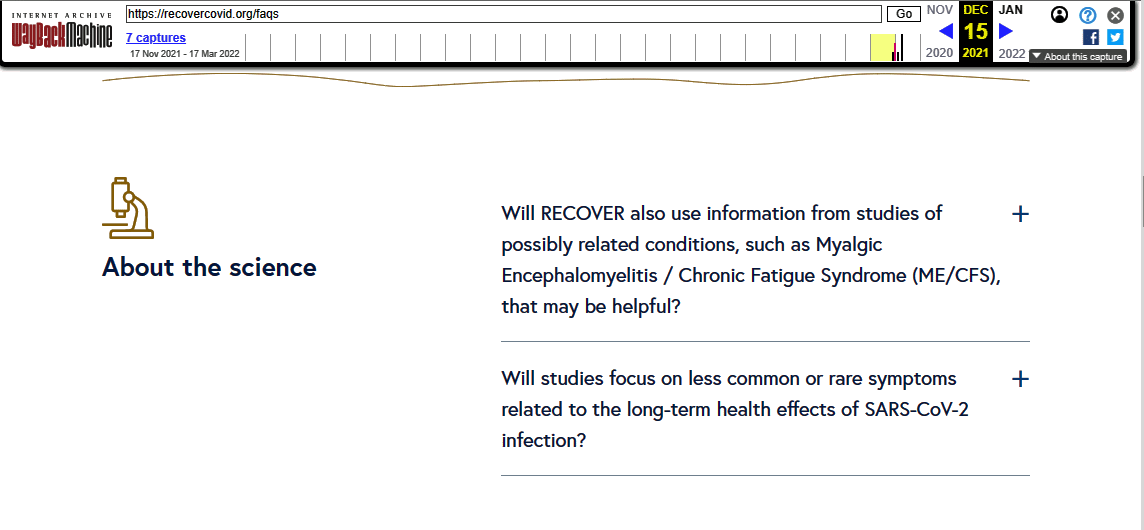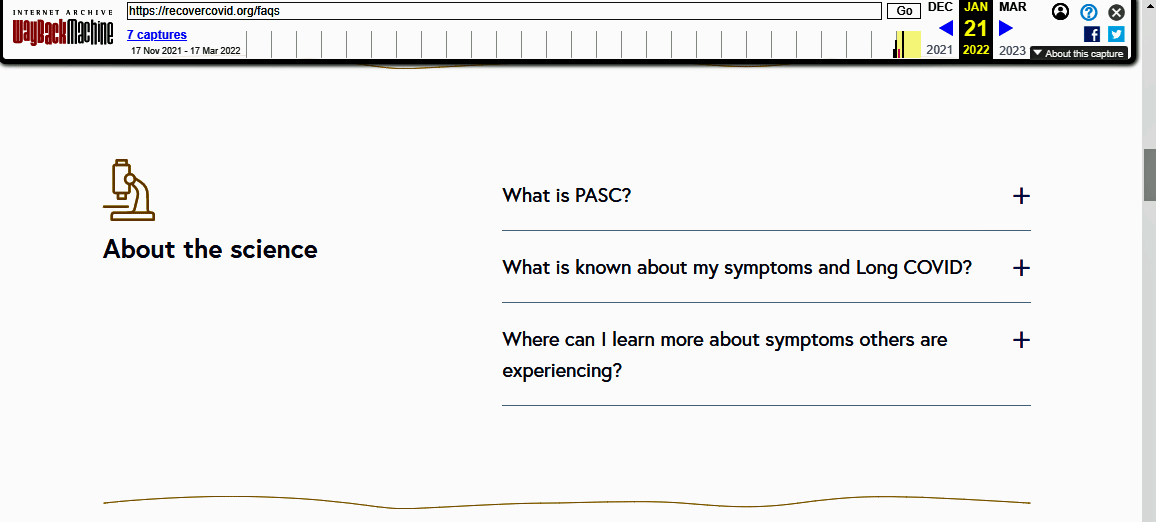
The future got a little brighter for people with long COVID.
It’s wild times, indeed. Sometimes it seems like the earth is shifting beneath our feet. Other times it feels like it’s standing still.
It’s good times for long COVID, though, as the future just got a bit brighter. As many people with long COVID continue to get the cold shoulder from their doctors, the Biden Administration, it appears, has their back.
President Biden issued a Presidential Memorandum directing the Secretary of Health and Human Services (HHS) to create a long-COVID command center that has all the federal health agencies (NIH, FDA, CDC, AHRQ, etc.) together to produce a national research action plan on long COVID and…associated conditions.
A “memorandum” (“a written message in business or diplomacy”, “a note or record made for future use”) may not sound like a big deal, but a “Presidential Memorandum” carries some real weight. It “has the force of law and is usually used to delegate tasks, direct specific government agencies to do something, or to start a regulatory process”.
So this Presidential Memorandum is going to make things happen. The first thing it’s going to make happen is the creation of the action plan. That, again, may not sound too exciting, but action plans provide the basis for, well, action. They’re what the federal government uses to move forward.
Diana Berrent, founder of Survivor Corps told the Associated Press, “This is the first effort that truly comports with the needs of people who are suffering”. She sees this effort “as a global, comprehensive approach to an extremely thorny issue that has previously received a scattershot approach.”
As our experience with ME/CFS has shown over the years, doctors are often the most resistant to new information and the last to get it about diseases like ME/CFS and long COVID. That will surely change as the Feds will quickly disseminate best care practices as they arise. Help with Medicare, disability, and insurance coverage is included as well.
Dr. Leana Wen, a former Baltimore health commissioner highlighted the work on treatments and disability:
“This is a very important move on the part of the Biden administration to acknowledge that long COVID is real, that it is a significant threat, and that much more needs to be done. The emphasis on treatment for long COVID, and recognizing that this could be a source of ongoing disability, are long overdue.”
There’s not a ton of money attached to this ($20 million initially) and much more is needed (Centers of Excellence for one), but it’s a good start. The report will increase long COVID’s visibility, give it a nice platform within the federal government for future efforts, and the overall effort will support people with long COVID in several ways.
Because the memorandum specifically mentions ME/CFS, dysautonomia, and MCAS in connection with long COVID, the opportunity exists – and our advocates will surely push for this – for the big strategic report at the end of the year to lay out the next steps that include other post-infectious diseases like ME/CFS in its recommendations. The NIH and other agencies would find it hard, indeed, to resist those directives.
Solve M.E. President Oved Amitay highlighted that opportunity when he stated:
“It is critically important that the Presidential Memorandum acknowledges the need to learn from other post-infection diseases such as myalgic encephalomyelitis/chronic fatigue syndrome (ME/CFS), dysautonomia, and mast cell activation syndrome (MCAS) that are strikingly similar to Long Covid. We believe that this field-wide approach will improve outcomes for the millions of people who are affected by all of these diseases.”
One thing we’ve learned – federally funded/produced reports can actually make a difference. It was the federally funded 2015 “Beyond myalgic encephalomyelitis/chronic fatigue syndrome: an IOM report on redefining an illness” that paved the way for the 3 NIH-funded ME/CFS research centers and Nath’s Intramural ME/CFS study. Seven years later, one would have thought that a pandemic of ME/CFS-like long-COVID cases would have done even more, but our support at the NIH has actually waned in some ways. These reports matter and it’s good to see a memorandum that takes these diseases seriously.
If only the NIH would do the same with ME/CFS.
Seriously…

Meanwhile, the NIH continues to flail about with ME/CFS. There’s no way our field will be able to keep up with the long-COVID findings without more support.
The NIH continues to flail rather helplessly and, to be honest, rather pitifully about ME/CFS. A case in point came last week in response to a carefully worded question at the NIH Telebriefing. I asked what the NIH was doing to ensure that the ME/CFS community would quickly benefit from the massive long-COVID effort going forward.
The answer spoke volumes – not so much in what was said but what was unsaid. We learned that the NIH is indeed doing things. It is, for instance, allowing ME/CFS researchers to add long-COVID patients to their studies – and that’s a good thing.
It’s not, though, ensuring that people with ME/CFS will as quickly as possible benefit from long-COVID findings – just the opposite, in fact. It’s pretty well ensuring that people will NOT benefit quickly at all.
For one, those researchers are doing yesterday’s research – they’re not following up on long-COVID findings. For another, the NIH’s small ME/CFS research effort is funding about 15 ME/CFS studies, plus the 3 research centers, for a grand total of about $15 million a year.
Compare that to the massive long COVID RECOVER research program underway. We’re talking 1.15 billion dollars massive, 17,000 participants massive, 100 researchers, 32 major research sites, 4 data repositories – massive. We’re talking probably hundreds of highly sophisticated studies. They should produce results – probably lots of results – and those results will need to be assessed in ME/CFS.
There’s just no way for our small field to keep up.
Of course, we are going to benefit. The long-COVID findings will slowly trickle down, they will prompt more researchers to study ME/CFS, and knowledgeable doctors will apply new treatment options to their ME/CFS patients. No matter what the NIH does or doesn’t do, we’re on the upward track. We’re in magnitudes better shape than in pre-pandemic times when the NIH had its 20 or 30-year “plan” to build a decent ME/CFS research effort.
That scenario doesn’t even begin, though, to take into account the real possibilities present: of the original long haulers – the really long haulers – getting the help they richly deserve. Morality doesn’t have a place in the NIH stats, but the people who work there are humans and that means morality does apply – and there’s something morally and ethically right about people with ME/CFS benefitting quickly, and something morally wrong about that not happening. You don’t need a science degree to understand that.
Permeating the unsaid in the NIH’s response, though, was the same message we’ve heard again and again: “Read my lips: you’re on your own”. Maybe that will change. For now, the message remains the same.
Let’s make that be a promise they don’t keep for us and for them.
An NIH at Odds with Itself
I say the NIH is suffering. I doubt that anyone with ME/CFS would lose sleep over that idea, but nevertheless, I assert it’s true.
The NIH is suffering because it’s not living up to its ideals as an organization. Every time it kicks ME/CFS or fibromyalgia in the teeth it makes a mockery of its mission statement to provide “leadership and direction to programs designed to improve the health of the Nation“, and its commitment “to exemplify and promote the highest level of scientific integrity, public accountability, and social responsibility in the conduct of science.”
Neither of those, statements after all, came with an asterisk (*except for diseases like chronic fatigue syndrome, fibromyalgia, and the like). Whether the NIH likes it or not, it has a commitment to help everyone who is ill and that’s about as sacred a commitment as you can get. For whatever reason, it’s allowed something to get in the way of honoring its sacred commitment.
Pointing to all the good the NIH does do doesn’t wipe away that stain. Nor do justifications like “ME/CFS is too complex”, or “it’s a wastebasket disease”, or “we don’t like working with them”, or whatever gets said.
All organizations, of course, are susceptible to drift. As human beings, we excel at that. We all get sidetracked. Getting sidetracked is part of being human condition, but so is wrenching ourselves back to our core commitments and living out of them. The NIH seemed to wrench itself back to its core promise to the nation seven years ago when we had what you could call our George Bush moment.
Our George Bush Moment
George Bush’s promise during the 1988 Republican Convention, “Read my lips: no new taxes“, made the headlines. Republicans thrilled to the line in the sand Bush drew – and Bush paid for it when he didn’t keep his word.
Thirty-two years later on Oct. 29th, 2015 we had our own George Bush moment when NIH Director Francis Collins said: “Give us a chance to prove we’re serious because we are.” Seven years later, Collins’ stirring words have proved to be empty indeed. Only Collins knows if he was sincere at that moment. I chose to believe that he was, but whether through inattention, other priorities, obstruction, or whatever, he was thwarted from keeping his promise to the million or so people with ME/CFS in the U.S.
There’s no doubt that fulfilling that promise wasn’t going to be easy, and we shouldn’t underestimate the difficulties that supporters like NINDS Director Walter Koroshetz or NINDS liaison Vicky Whittemore or NAIAD liaison Joe Breen face. My guess is that each of them would love to see ME/CFS receive many times the level of support that it does. In their own way, they have moved mountains.
It’s still remarkable, for me, to see the director of a $2.8 billion Institute – Walter Koroshetz – consistently show up at our little ME/CFS telebriefings (and get the same tough questions again and again). It was remarkable that Koroshetz has been unusually honest in acknowledging the need for many more ME/CFS research facilities. It was good to see him and Vicky Whittemore create the year-long effort to get a strategic plan for ME/CFS on track. I believe Koroshetz cares.
Similarly, Francis Collins – the former director of the $41 billion NIH – apparently came up with, or made real, the idea of the intramural NIH study, helped get the research center’s funding going, and actually devoted one of his monthly Director’s blogs to the subject of ME/CFS.
I don’t think we ever had an Institute director, let alone an NIH director even publicly mentioned ME/CFS. Prior to the Collins/Koroshetz effort, we were stuck in the little Office of Research on Women’s Health, getting $6 million in funding a year and declining.
Yet even with their public support, here we are. Even with long COVID and ME/CFS in the news constantly, and the pandemic producing an ME/CFS-like condition in millions of people in the U.S., our standing may have actually declined in the NIH. We’ve been denied entry into the RECOVER Initiative and the NIH apparently has no plans to ensure that our community quickly benefits from it. Even with these immense opportunities present, and with the former Director of the NIH and the current Director of NINDS giving us their public support, we’ve basically been locked out again!
Will the Real NIH Stand Up?
The confusing path NIH continues on regarding ME/CFS – promoting it in one venue / shutting down opportunities in another – reminds us that the NIH is actually a bunch of people working together, many of whom have different ideas and priorities.
Changes in the NIH’s RECOVER website indicated that someone clearly didn’t want ME/CFS associated with long COVID when a perfectly innocuous statement about ME/CFS research contributing to long-COVID research (and in the accompanying link, as I remember, contributing from long-COVID research). Note that the statement didn’t commit the NIH to spend money on ME/CFS – it simply stated that it was possible the two diseases might benefit from each other. That was too much for somebody. It was removed.
The Wayback program indicated that in November of last year, the RECOVER website said this:
By Jan. 2022 it said this
NIH RECOVER ME/CFS – Long COVID Webinar on the 12th

Recover? But for whom? That’s the big question. Please register for this event.
That’s not the end of the story, though. Someone, or some group of people, got the ME/CFS connection to long COVID included on a list of the RECOVER webinars! That webinar – featuring David Systrom, Nancy Klimas, and Benjamin Natelson – occurs tomorrow from 12:00 PM – 1:30 PM EDT.
This is a late notice, for sure, but the NIH mailed out the wrong link and didn’t provide a link to its website. Until their email today, there was no way to register. Now there is. Let’s show up and let the RECOVER Initiative know that we count.
Register Here
Keeping Possibility Alive

Immense possibilities exist – if we keep focused on them.
Despite the NIH’s current intransigence regarding ME/CFS, immense possibilities loom and they are what we must focus on. Unprecedented amounts of money are going into studying “ME/CFS” (or at least a coronavirus-induced branch of it).
Our goal now has to be to keep those possibilities alive, and when confronted with difficulties – not give into the lure of resignation and disappointment.
There are numerous ways the ME/CFS community could rapidly benefit from the NIH’s long-COVID RECOVER initiative. The NIH could spend a little of the $2 billion or more increase in funding it’s slated to get this year – and add a cohort of ME/CFS patients to its RECOVER Initiative. That would be easy, cheap, and effective.
It could also create a long-COVID-ME/CFS grant opportunity that supports research into both diseases. Similarly, it could create a post-infectious disease initiative that seeks to integrate long-COVID research with other post-infectious diseases like ME/CFS, post-Lyme Treatment Disease, post- Giardia, post- EBV, etc. It could increase the number of ME/CFS Research Centers and integrate them with the long-COVID research centers.
Surely many other possibilities are present. If we act out of the possibilities present, instead of the difficulties, we can move mountains.
Our best way to do that right now is to support Advocacy Month in the U.S.. If you live in the U.S. and do one advocacy action a year, make it during Advocacy Month – where we go for the gusto – and affect change where it can make the most difference -at the federal level. Two years ago, ME/CFS advocates contributed to the $1.15 billion in funding provided for long COVID. Everyone who participated in that gets to have a piece of that. More opportunities loom this year – don’t miss them.
Sign Up Here to Participate in Advocacy Month









I believe that many of us with ME/CFS can also be included in the long covid group. I had covid in December 2020 and my ME/CFS is much worse now than it was before I got covid. I’m sure I’m not the only one this has happened to.
I’m going to a Long Covid clinic and I’d say roughly 20% of the other patients here have hEDS/HSD, I’m not sure how many had pre-existing ME/CFS. I’d say there will be a significant number of ME/CFS in the Long Covid studies either intentionally or not.
How is the clinic going, Matt? Are you satisfied with their level of knowledge and care?
It hasn’t been helpful yet and I’m not satisfied. The treatments are supposed take time so in a month or so I may come back and amend that statement. I won’t name the treatment yet as I don’t want to unfairly disparage it in case it does work. But I do wish there was more rigor and better data collection. It seems that unsupporting evidence is being ignored.
I have a data science background so the idea that he doctors are ignoring the cluster of EDS patients is insane to me.
That’s good news – not for the people who unfortunately got hit with both conditions but for the rest of us. Those are fascinating study in themselves – ME/CFS or hEDS/HSD overlain by long COVID. Have you been asked to join the NIH’s RECOVER study? Is information on that available at the clinic.
In talking to a number of other patients, many are not even sure they had covid and see it as probable vaccine injury. Others knew they have CFS/ME and are just feigning long covid to try to get treatment. Many knew they had something prior to covid but getting covid exacerbated it so they’re just calling it long covid. I’m pretty sure I’ve never had covid and was open about that at the clinic, they said I have all the classic signs of long covid so it was worth a try anyway. I was worried I’d be the only hEDS person here but there are lots of us.
I’m based in the EU so no info on NIH Recover survey here.
Very interesting. Thanks Matt…..glad to see people with ME/CFS are getting in there.
There is lots of irony in this statement about NIH: “It’s not, though, ensuring that people with ME/CFS will quickly benefit from long-COVID findings – just the opposite, in fact.”
I guess the irony depends what you mean by “quickly.” No one will benefit quickly from Long COVID findings. This stage of the RECOVER Initiative is at the basic end of the research spectrum. The timeline for benefits is therefore probably measured in years, hopefully just a few, but certainly a longer time span than what most of us would see as “quickly.”
Yes, indeed. As quickly as possible would be more accurate. It’s like a slowly building wave – hopefully a very big one.
Thank you Cort for getting the word out about the webinar!
Regarding the relative “acceptability” of Long Covid vs ME/CFS, I wonder how long it will take ME/CFS sufferers to quietly tell others that they’re suffering from Long Covid.
In the midst of all this Stuff, it’s great your getting real news out. Thank you again and again.
I don’t understand why you’re quoting Leana Wen after the atrocious things she was saying on the national news about the Gridiron Club dinner.
She’s not our ally.
The first time I ever heard of Leana Wen was in the Associated Press article on the Memorandum. I used her because she was cited as an expert in that article. I had no idea about her otherwise until you mentioned her.
Personally, I didn’t find her comments in The Hill objectionable but I recognize that COVID-19 and vaccinations are such hot-button issues that anyone who says anything is probably going to really upset someone.
Thanks Cort. The fact that any reference to ME/CFS was removed from the RECOVER website speaks volumes. Maybe Maureen Hanson is smart to say she is not convinced the Long Covid and ME/CFS are mix & match. Or maybe she is trying to give us hope that we are not forgotten. God help the Long Covid community if all this money ends up as rehabilitation strategies rather than treatment. If an actual treatment is discovered and approved by the head honcho’s, then I would anticipate that the ME/CFS community would need to self-fund any attempts to access it. We don’t have one viral infection alone to pin it on. I would hope that people like Martha (above) would benefit. Or would they need to deny their pre-existing condition? What about the unlucky ones who developed Long Covid from the vaccines or worsened after the vaccines designed to protect them (Dr Asad Khan comes to mind, and Avindra Nath is well aware of this phenomenon amongst the previously healthy) It’s one big mess that’s for sure. The lowest on the totem pole tends to be the one with the least political clout.
Sylvia, the age old adage of ‘the squeaky wheel gets the grease’
is true. And only too true that cfs/me have little energy to squeak. If the NIH is ever found to have known what the cause of cfs/me already was, it would be no big surprise.
Less of a surprise than Lyme and its initial main geographical USA significance.
Because the NIH has done so little as to seem to have negative purposeful inaction Re: cfs/me (IMO).
I have ME/CFS and have definitely gotten worse since receiving the covid vaccine. Any hope that this is or will be addressed at some point?
Mary, thanks for sharing this I have ME too and the same thing happened to me.
Do you (or Cort or anyone else) know if severe reactions to Covid vaccines are being medically recognised in any way (in any country)? Could we get an extra diagnosis from this?
I am extremely ill (longterm bedbound) and am now thinking as tactically as I can. Do you think there’s any kind of diagnosis (e.g. ‘post-vaccine Long Covid’) that might make us eligible for treatments/trials available to folk with Long Covid?
To be clear, I think treatments + research *should* be available to ALL people with ME and Long Covid, but the current reality is very different.
this article is worth a read- https://www.science.org/content/article/rare-cases-coronavirus-vaccines-may-cause-long-covid-symptoms
doesn’t make me hopeful but nice to know there’s some recognition by experts
Mary — do you have mcas? Worth checking out if you haven’t already. My son (mecfs , pots) developed dermographia after Pfizer 2. (No worsening of his general mecfs symptoms, luckily). For us this turned out to be a blessing because it meant we realised he also has mcas. Treatment for the mcas has improved his mecfs severity. ( And also meant that he had no problems with pfizer 3. )
2 month headache in forehead- top of head touch sensitive. Weaker than usual and balance is lagging. Napping when never before.
2 vax + booster.
Keep me in your pool.
In Europe, long covid is treated as a psychosomatic disease. Exactly the same as it was with ME.
There is a lot of vaccination damage from corona vaccines.
COVID-19 Vaccine Massacre: 68,000% Increase in Strokes, 44,000% Increase in Heart Disease, 6,800% Increase in Deaths Over Non-COVID Vaccines
https://healthimpactnews.com/2022/covid-19-vaccine-massacre-68000-increase-in-strokes-44000-increase-in-heart-disease-6800-increase-in-deaths-over-non-covid-vaccines/
This is in the latest email from Solve M.E.
‘Ask Congress to TREAT & CARE for Post-Infection Diseases During Advocacy Month
What does the TREAT Long Covid Act mean for ME/CFS? Check out this 1 min video to learn more.’
https://www.youtube.com/watch?v=SUNx0Fla0XU
“What does this mean for ME? This bill means centers of excellence for treatment, education and research for people with ME/CFS and our centers are the ones prioritized for funding. It’s a real big win for us.”
CFS/ME/SEID for 17 yrs.Post modena vaccine. Immidiately had a headache that has lasted a year. muscle weakness worse, cognitive problems worse. I feel and act like I have a concussion. Feeling like I have pressure in the head. Very quick to cry. Depression is worse. Depression could be situational. Lots of doctors visits this yr and plenty of dismissal. My critical CK 1027(muscle damage) they said was due to very strenuous exercise. Ya, No NOT that at all. My very high respiratory rate for 1.5 hours after I stopped my very modified yard work, they said was due to asthma. No NOT that the breaths were clear, full and smooth. I made myself a DNR/CMO at 55. This week I had a tilt table test and tried to explain how anxious I was about the possibility of getting “atropine” if I fainted. Just let me wake up on my own.(got any smelling salts that won’t kill me) Give me 1/4 the dose please or you will send me into very high blood pressure and heart rate, possible arrhythmias. I was told we have to give you what is called for. I explained I need the test I need objective data. So I said if something happens and you need to resusitate me do so for only 4 minutes. Then let me go. She said no. Because it is a procedure we have to do all we can to bring you back. I explained she did not get to decide my lifes worth I do. I am already a DNR I realize you have to revive me for a test but don’t make me a vegtable. She said it is a legal issue and we have to do all we can. Sorry you or your illness has no value here.
So sorry you received so little understanding D. That’s miserable.
You have written such a wonderful paragraph. I wish I could take you to a Dr. Office visit with me. I truly think we are better off rejecting most of their treatment offerings.